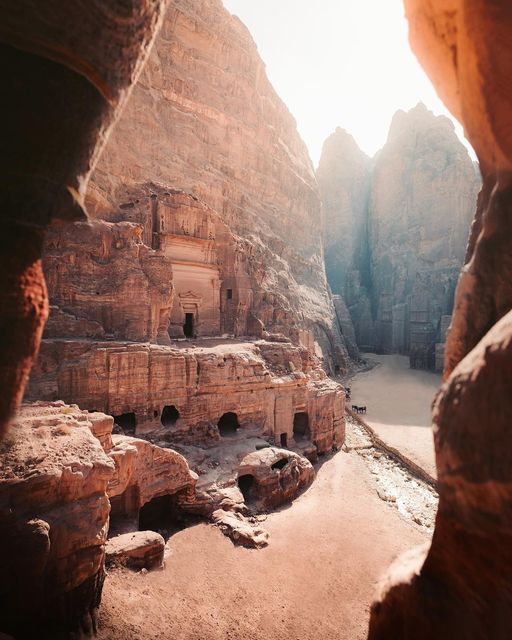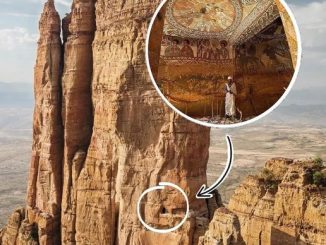Nestled amidst the rugged desert landscapes of Jordan lies a timeless marvel of human ingenuity and creativity – Petra, the ancient city carved out of red sandstone rocks. As one of the New 7 Wonders of the World, Petra continues to captivate visitors with its awe-inspiring architecture, intricate rock-cut facades, and rich cultural heritage. Join us as we embark on a journey to explore the secrets of Petra, delving into its history, significance, and enduring allure.

The Rose-Red City: Petra, also known as the “Rose-Red City,” derives its name from the distinctive hue of the sandstone cliffs that surround it. Carved out of these majestic rock formations by the ancient Nabateans, Petra served as the capital of their flourishing kingdom from the 4th century BCE to the 2nd century CE. The city’s strategic location along the trade routes of the ancient world enabled it to prosper as a center of commerce, culture, and religious worship. Today, Petra’s iconic Treasury, with its intricate facades and towering columns, stands as a testament to the architectural brilliance of its creators and remains one of the most recognizable landmarks of the ancient world.
The Nabatean Legacy: The Nabateans, a nomadic Arab tribe, were the masterminds behind Petra’s remarkable transformation from natural rock formations into a thriving city. Through a combination of ingenious engineering and artistic skill, they carved elaborate tombs, temples, and monuments directly into the sandstone cliffs, creating a harmonious fusion of nature and architecture. The elaborate facades of these structures, adorned with intricate carvings and sculptures, reflect the Nabateans’ reverence for the natural world and their rich cultural heritage. As visitors wander through Petra’s labyrinthine streets and hidden passages, they are transported back in time to an era of prosperity and innovation, where the spirit of the Nabateans lives on in the stone.
The Silk Road Hub: Petra’s strategic location along the ancient Silk Road made it a vital hub for trade and commerce between the East and West. Merchants from distant lands traveled to Petra to exchange goods, ideas, and cultures, transforming the city into a melting pot of diverse influences and traditions. The city’s prosperity was further enhanced by its control over key trade routes, which allowed it to amass wealth and power far beyond its borders. Today, the remnants of Petra’s once-thriving marketplace, with its ancient stalls and bustling thoroughfares, offer a glimpse into the vibrant commercial life of the ancient world and the enduring legacy of Petra as a crossroads of civilization.
Preserving Petra’s Legacy: As we marvel at the splendor of Petra’s ancient ruins, it is essential to recognize the importance of preserving this cultural treasure for future generations. Despite its enduring allure and significance as a UNESCO World Heritage Site, Petra faces numerous challenges, including erosion, vandalism, and encroaching development. Efforts to safeguard Petra’s legacy include conservation initiatives, community engagement programs, and sustainable tourism practices aimed at balancing the needs of preservation with the demands of modernity. By working together to protect and conserve Petra, we can ensure that this ancient wonder continues to inspire awe and wonder for centuries to come.
Ancient Discoveries:
Petra is just one example of the many ancient discoveries that have captivated the imagination of scholars and enthusiasts around the world. From the pyramids of Egypt to the temples of Angkor Wat and the ruins of Machu Picchu, these archaeological wonders offer a glimpse into the rich tapestry of human history and culture. As we continue to explore and uncover the mysteries of the past, may we gain a deeper appreciation for the ingenuity, creativity, and resilience of our ancient ancestors, whose legacies continue to inspire wonder and awe across the ages.


